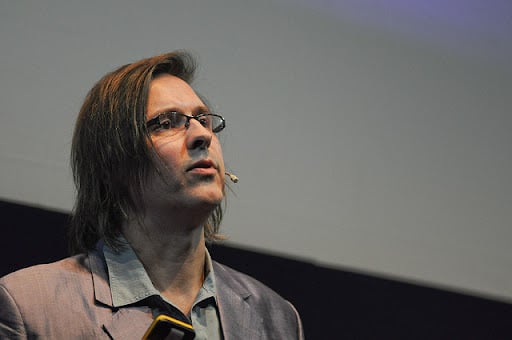- Simon Redfern’s Open Bank Project aims to revolutionize banking by promoting transparency and open-source innovation through standardized APIs.
- Redfern’s recent work focuses on bridging open banking with blockchain, enabling secure decentralized financial solutions.
Originally starting the Open Bank Project and serving as CEO of TESOBE, Simon Redfern has become a major player in the financial technology (fintech) scene, mostly because of his innovative work in open banking.
His professional path displays a strong conviction in openness, inclusivity, and the ability of open-source technologies to transform the financial sector, not only in terms of technological invention. Redfern’s narrative is one of tenacity, vision, and a will to democratize financial services availability.
A Vision of Transparency and Innovation in Banking
Redfern’s path into open banking started with a straightforward yet potent concept: banking transparency. Under his proposal, financial institutions would be more transparent, giving clients and outside developers access to banking data via standardized, secure APIs.
The goal to lower banking industry corruption and inefficiencies drove this extreme idea. “Why should fundamental financial information be hidden or delayed?” Redfourn asked. Early on, his ideas revolved around building an API-driven bank able to standardize data-sharing across different companies.
Although the first concept was to apply this in one bank, a whiskey discussion with a friend inspired a more bold vision: why not apply this for all banks? Initiated in 2010, the Open Bank Project sought to transform the way developers and banks worked together by using APIs to produce fresh, creative ideas.
Building a Global Ecosystem of Open Banking Innovation
The Open Bank Project acquired quick momentum. Designed as an open-source API solution, Simon Redfern and his colleagues at TESOBE let financial institutions access over 400 standardized APIs. Now supporting a community of more than 11,000 developers, this ecosystem brings together both big businesses and solo innovators, including financial startups.
The Open Bank Project’s success is determined not only by the quantity of APIs or developers engaged but also by the alliances it has developed with important financial institutions and authorities all around.
From guiding regulatory agencies in Mexico and Australia to collaborating with banks across Europe and Asia, the platform has grown to be the pillar of worldwide open banking projects. Redfern’s conviction in open-source technologies drives its success from the core.
Emphasizing how it democratizes technology and lets even local banks access enterprise-level tools, he says, “Open source is good for the spirit”.
Bridging Blockchain with Traditional Banking for a Secure Future
Redfern’s work is among the most contemporary and creative in nature since he emphasizes connecting blockchain technologies with conventional banking. The Open Bank Project signed a 10-year development agreement with API3 in 2021 so that banks may link their data straight to blockchain systems.
By means of this collaboration, financial institutions can leverage the distributed architecture of blockchain to improve the security, openness, and efficiency of their offerings.
For Redfern, this went beyond mere technological integration to include building the basis for financial future. Particularly with the growth of decentralized finance (DeFi), he views the convergence of open banking and blockchain as a necessary and unavoidable phase of the development of digital banking.
From sovereign identities to distributed data markets, his vision is one in which open banking data can drive blockchain-native solutions.
Fostering Innovation Through Hackathons and Collaboration
Redfern’s path is also defined by his unrelenting effort to encourage creativity inside the financial sector. His dedication to planning and running hackathons is among the most clear illustrations of this. These gatherings, sponsored by the Open Bank Project, have drawn thousands of developers and inventors from around the world.
Using the APIs of the Open Bank Project, the hackathons give teams a stage to prototype new financial solutions, hence generating hundreds of fresh applications.
One very memorable event was a fintech hackathon HSBC held in Hong Kong when Redfern’s team presented a whole API sandbox. The event proved the useful possibilities of open banking in retail finance by producing creative ideas such as micro-loan services and predictive tools for cash flow forecasting.
Redfern’s approach to these hackathons goes beyond simply producing fresh ideas to build a community of innovators able to challenge the limits of banking.

















